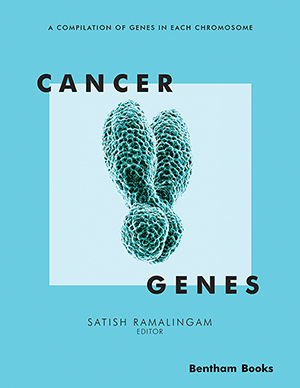Abstract
Background: Liver cancer (LC) is one of China's most common malignant tumors, with a high mortality rate, ranking third leading cause of death after gastric and esophageal cancer. Recent patents propose the LncRNA FAM83H-AS1 has been verified to perform a crucial role in the progression of LC. LncRNA FAM83H-AS1 has been verified to perform a crucial role in the progression of LC. However, the concrete mechanism remains to be pending further investigation.
Objective: This study aimed to explore the embedding mechanism of FAM83H-AS1 molecules in terms of radio sensitivity of LC and provide potentially effective therapeutic targets for LC therapy.
Methods: Quantitative real-time PCR (qRT-PCR) was conducted to measure the transcription levels of genes. Proliferation was determined via CCK8 and colony formation assays. Western blot was carried out to detect the relative protein expression. A xenograft mouse model was constructed to investigate the effect of LncRNA FAM83H-AS1 on tumor growth and radio-sensitivity in vivo.
Results: The levels of lncRNA FAM83H-AS1 were remarkably increased in LC. Knockdown of FAM83H-AS1 inhibited LC cell proliferation and colony survival fraction. Deletion of FAM83H-AS1 increased the sensitivity of LC cells to 4 Gy of X-ray radiation. In the xenograft model, radiotherapy combined with FAM83H-AS1 silencing significantly reduced tumor volume and weight. Overexpression of FAM83H reversed the effects of FAM83H-AS1 deletion on proliferation and colony survival fraction in LC cells. Moreover, the over-expressing of FAM83H also restored the tumor volume and weight reduction caused by the knockdown of FAM83H-AS1 or radiation in the xenograft model.
Conclusion: Knockdown of lncRNA FAM83H-AS1 inhibited LC growth and enhanced radiosensitivity in LC. It has the potential to be a promising target for LC therapy.
Keywords: FAM83H-AS1, FAM83H, liver cancer, radio-sensitivity, proliferation, patents, proteins.
[http://dx.doi.org/10.2174/1574892817666220629104641] [PMID: 35770413]
[http://dx.doi.org/10.3322/caac.21551] [PMID: 30620402]
[http://dx.doi.org/10.1016/j.gene.2017.08.008] [PMID: 28843521]
[http://dx.doi.org/10.1016/j.eururo.2016.08.003] [PMID: 27568654]
[http://dx.doi.org/10.1074/jbc.M113.488593] [PMID: 24616104]
[http://dx.doi.org/10.1158/0008-5472.CAN-14-2931] [PMID: 25600645]
[http://dx.doi.org/10.7314/APJCP.2013.14.2.1077] [PMID: 23621190]
[http://dx.doi.org/10.1111/jgh.13606] [PMID: 27696511]
[http://dx.doi.org/10.1093/carcin/bgt053] [PMID: 23393225]
[http://dx.doi.org/10.1038/ng.3192] [PMID: 25599403]
[http://dx.doi.org/10.1038/ncomms13608]
[http://dx.doi.org/10.1002/1878-0261.12489] [PMID: 30959550]
[http://dx.doi.org/10.1002/jcp.28780] [PMID: 31102263]
[http://dx.doi.org/10.1016/j.biopha.2019.109342]
[http://dx.doi.org/10.18632/aging.102832] [PMID: 32074085]
[http://dx.doi.org/10.1016/j.biopha.2020.109961]
[http://dx.doi.org/10.1016/j.ejphar.2019.03.002] [PMID: 30831080]
[http://dx.doi.org/10.1002/1878-0261.12016] [PMID: 28078827]
[http://dx.doi.org/10.1158/1541-7786.MCR-13-0289] [PMID: 24736947]
[http://dx.doi.org/10.1016/j.ajhg.2007.09.020] [PMID: 18252228]
[http://dx.doi.org/10.1016/j.archoralbio.2015.06.016] [PMID: 26142250]
[http://dx.doi.org/10.1002/mc.22425] [PMID: 26512949]
[http://dx.doi.org/10.2174/1574892814666190726124735] [PMID: 31362665]
[http://dx.doi.org/10.2147/OTT.S236860] [PMID: 32256083]
[http://dx.doi.org/10.1186/s13059-020-01994-5] [PMID: 32290841]
[http://dx.doi.org/10.1186/s12929-020-00636-z] [PMID: 32264890]
[http://dx.doi.org/10.1038/s41585-019-0195-1] [PMID: 31110275]
[http://dx.doi.org/10.1038/onc.2017.184] [PMID: 28604750]
[http://dx.doi.org/10.1016/j.cell.2018.06.014] [PMID: 30033362]
[http://dx.doi.org/10.1002/ctm2.367] [PMID: 33931980]
[http://dx.doi.org/10.1158/1541-7786.MCR-18-0087] [PMID: 30115758]
[http://dx.doi.org/10.1186/s13045-019-0773-y] [PMID: 31488218]





























